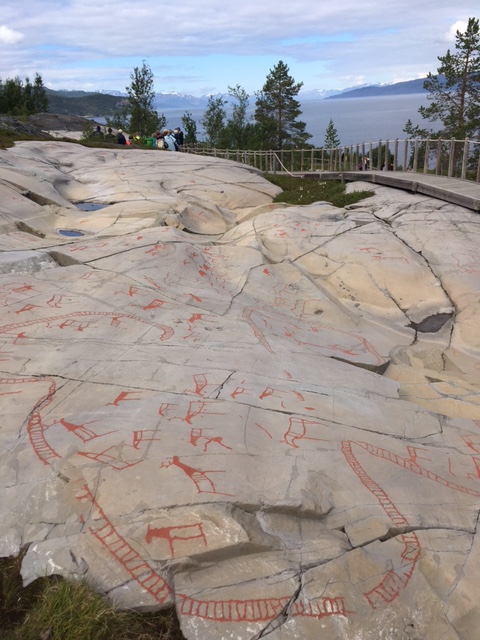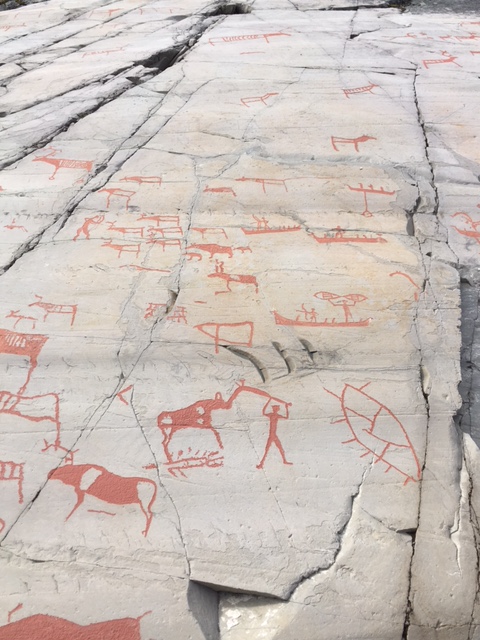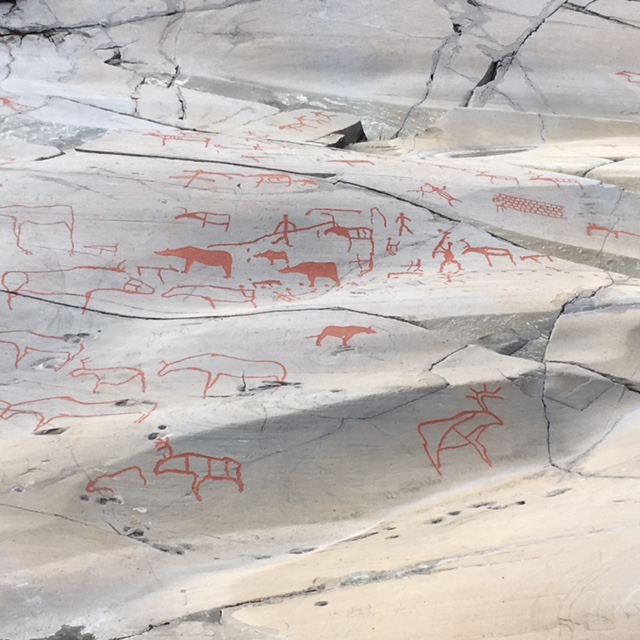The rock paintings of Alta is one of eight UNESCO World Heritage sites in Norway. The rock paintings are found in several locations along the coastline, but only a small part of the total area is available to visit. The rocks paintings date from approximately 5000 BC to the year 0. They show different hunting and fishing scenes that are recognizable from the cultural practices used into modern times.
The majority of the shapes are of reindeer or moose. Below you can see moose and people (most likely hunters).

Below you can see wild reindeer being captured in a fence where they would be killed. There are no longer wild reindeer in Norway, but the herding techniques used today have notable similarities to those shown in the painting.

The photo below shows a number of different hunting techniques. On the left is a hunter with bow and arrow facing a herd of reindeer. On the right is a fisherman in his boat, with a fish on his line coming down from the boat. At the bottom of the photo is a man hitting a moose on the head. Exactly what this figure represents is uncertain, but it might be a noaidi (shaman) hitting a moose with a ceremonial moose head club as part of a sacrifice. The lines underneath the moose may be a trapping pit.

There are a number of bears depicted in the painting. Bears had a special place in Sami culture. They were killed in special ceremonies and their bones were buried carefully afterwards. Bears were believed to have special powers meaning that they could move between the “real” and the spirit world. You can see bears and bear tracks in the middle of the photo below.

The style of boats changes in the paintings, depending on when they were made. Some of them have moose heads, as seen in the photo below.
